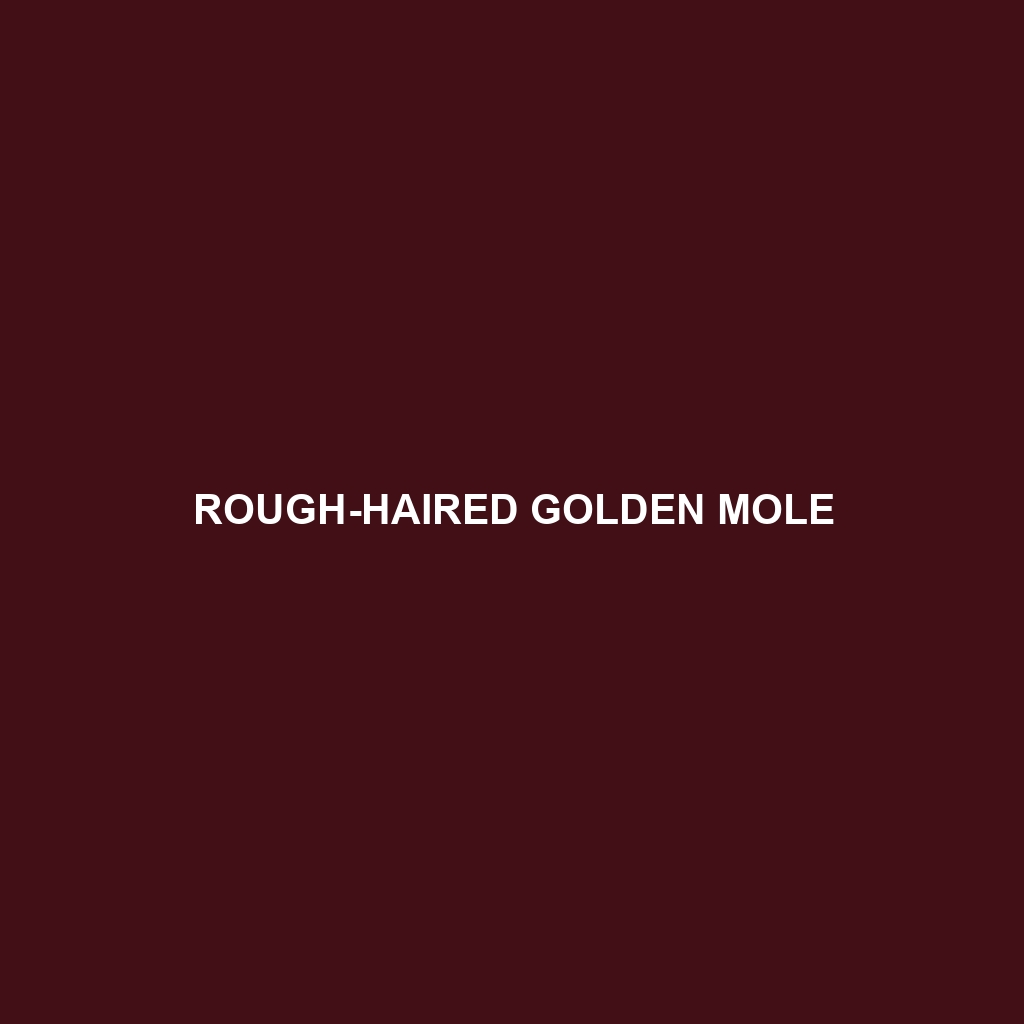Rough-haired Golden Mole
The Rough-haired Golden Mole (Chrysospalax villosus) is an intriguing, subterranean mammal found primarily in Southern Africa. Known for their distinctive metallic sheen and specialized burrowing lifestyle, these small creatures are a fascinating study in adaptation and survival. Despite their name, they are not true moles but belong to a unique family of their own, Chrysochloridae.
Physical Characteristics:
Size: Rough-haired Golden Moles are relatively small, typically measuring about 12 to 15 centimeters in length and weighing between 50 to 100 grams.
Coloration: Their fur exhibits a striking sheen that can appear golden to coppery-brown, depending on the light. This iridescence is due to the structure of their hair rather than pigment.
Special Features: They have a robust body with strong, paddle-like forelimbs equipped with large claws for digging. Their eyes are covered with skin and are non-functional, adapted for a life spent mostly underground. Additionally, they possess a leathery pad on their noses to aid in soil displacement.
Behaviors:
Social Interactions: Rough-haired Golden Moles are primarily solitary creatures, coming together only to mate. They communicate through a series of soft calls and vibrations sensed through the ground.
Feeding Habits: Their diet consists mainly of insects and other small invertebrates, which they hunt using their acute sense of touch and vibrations in the soil. They are known to create complex tunnel systems to trap and ambush their prey.
Ecological Roles: As insectivores, they play a crucial role in controlling insect populations. Their burrowing activities also help aerate the soil, promoting better water infiltration and nutrient distribution.
Habitats:
Preferred Environment: These moles are found in a variety of habitats ranging from sandy soils in coastal areas to more firm soils in grasslands and forests. They prefer environments where they can easily dig and find sufficient food.
Geographic Range: The Rough-haired Golden Mole is native to Southern Africa, with a distribution that spans parts of South Africa, Eswatini, and Mozambique.
Adaptations:
Burrowing: Adaptations like powerful forelimbs, a streamlined body, and a leathery nose pad enable efficient burrowing. They can move forward and backward through their tunnels with ease.
Sensory Adaptations: Lacking functional eyes, they rely heavily on their acute sense of touch and hearing. Their skin-covered eyes and ear structures minimize soil intrusion while maintaining sensitivity to environmental vibrations.
Conservation Status:
Threats: Habitat destruction due to agricultural expansion, urbanization, and mining poses significant threats to their populations. Additionally, the use of pesticides can reduce their food sources.
Conservation Efforts: Conservation actions include habitat protection and management, as well as public awareness campaigns to reduce pesticide use and encourage sustainable land use practices.
Fascinating Fun Facts:
Iridescent Fur: The golden sheen of their fur is not due to pigmentation but is a structural coloration caused by microscopic structures in the hair that reflect light.
Efficient Digging: They can dig through soil at an impressive speed, sometimes covering as much as 5 meters (over 16 feet) in an hour.
Ancient Lineage: The family Chrysochloridae, to which the Rough-haired Golden Mole belongs, has a lineage that dates back over 60 million years, making them one of the most ancient groups of burrowing mammals.
Energy Conservation: They have adapted to enter a state of torpor to conserve energy during times when food is scarce, reducing their metabolic rate significantly.
By understanding and appreciating the unique attributes of the Rough-haired Golden Mole, we can better appreciate their ecological importance and the need to protect their habitats.
